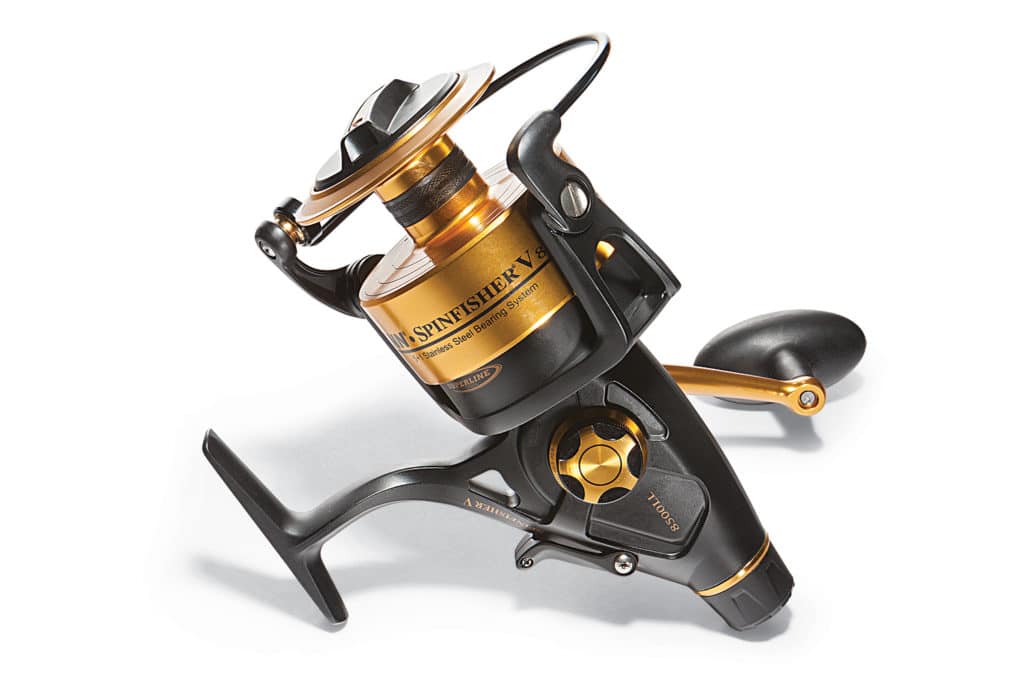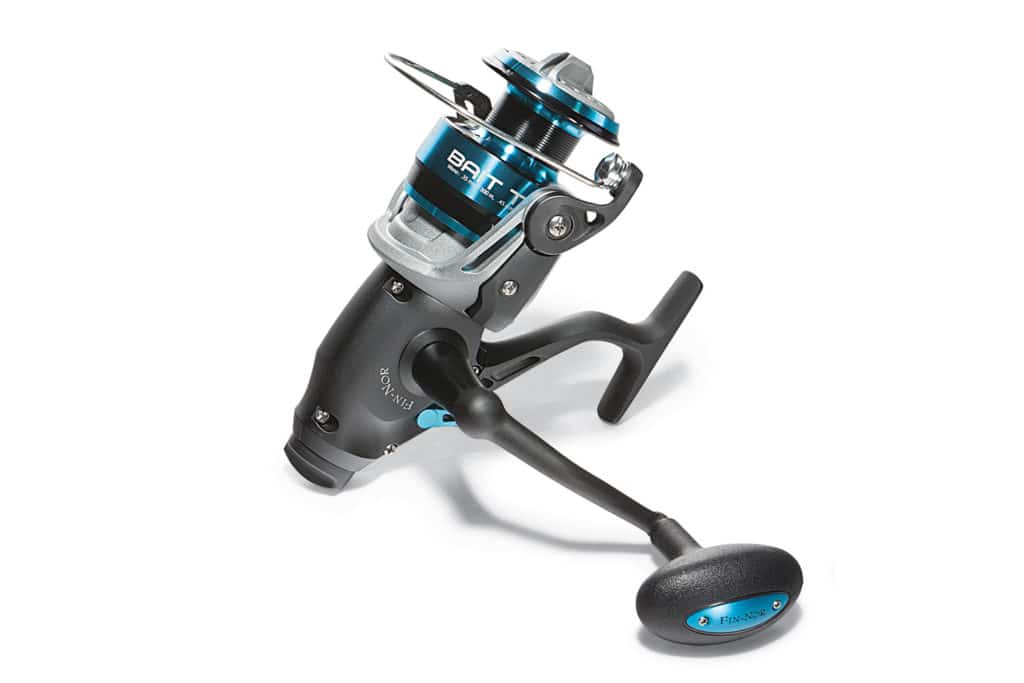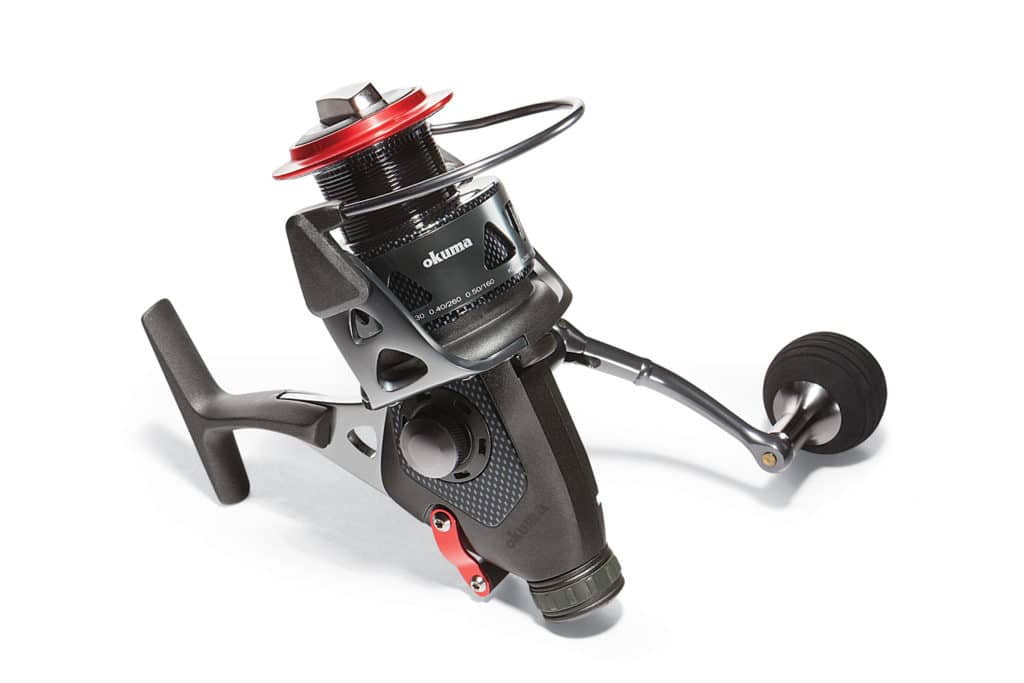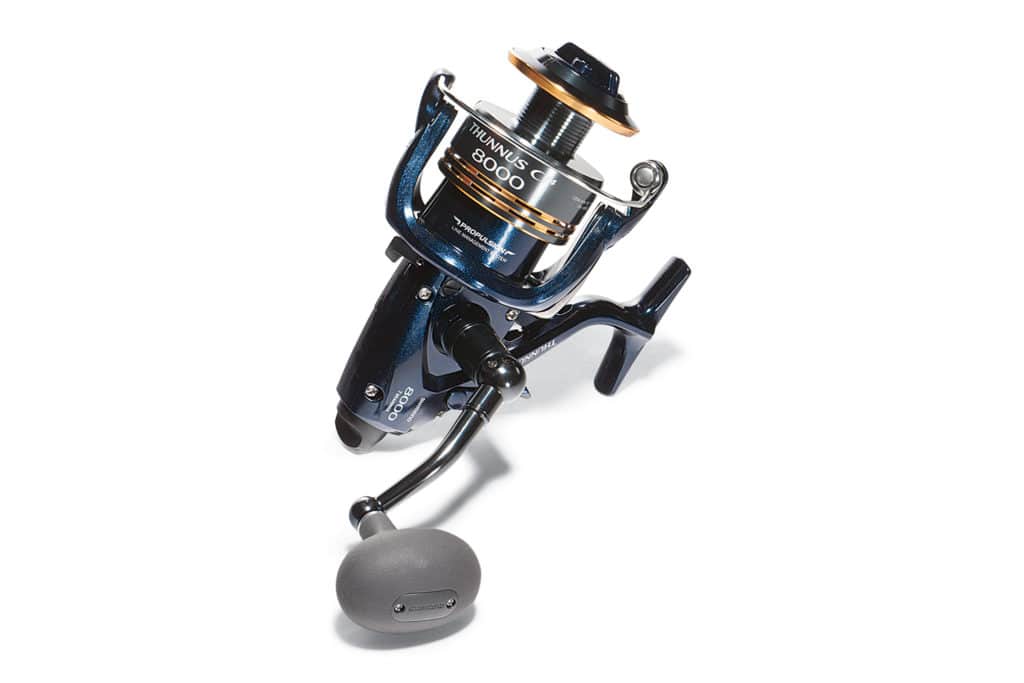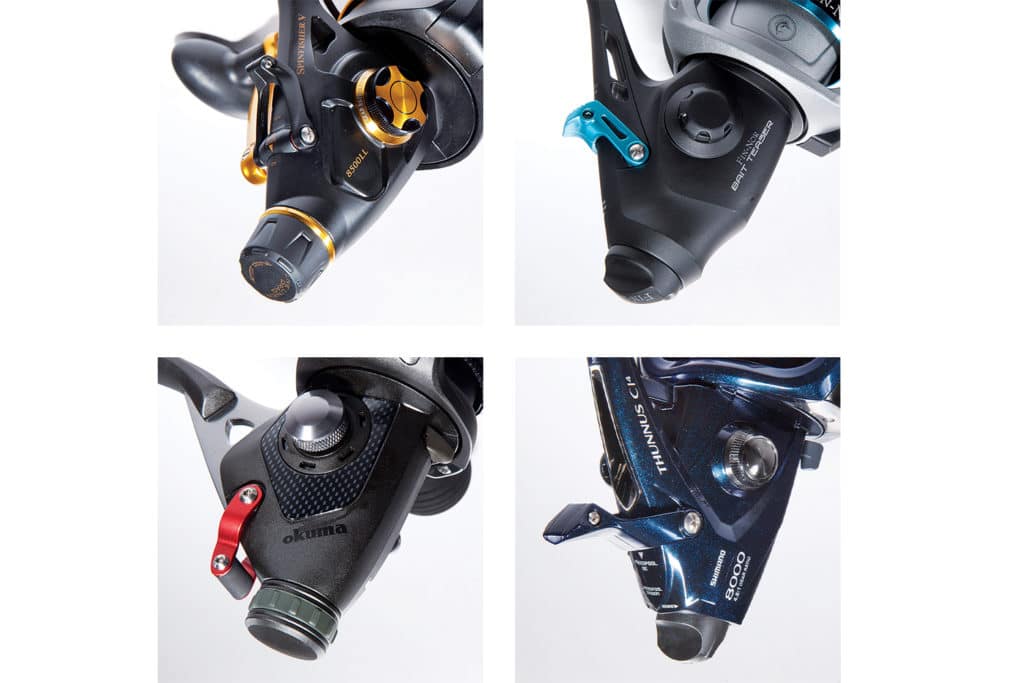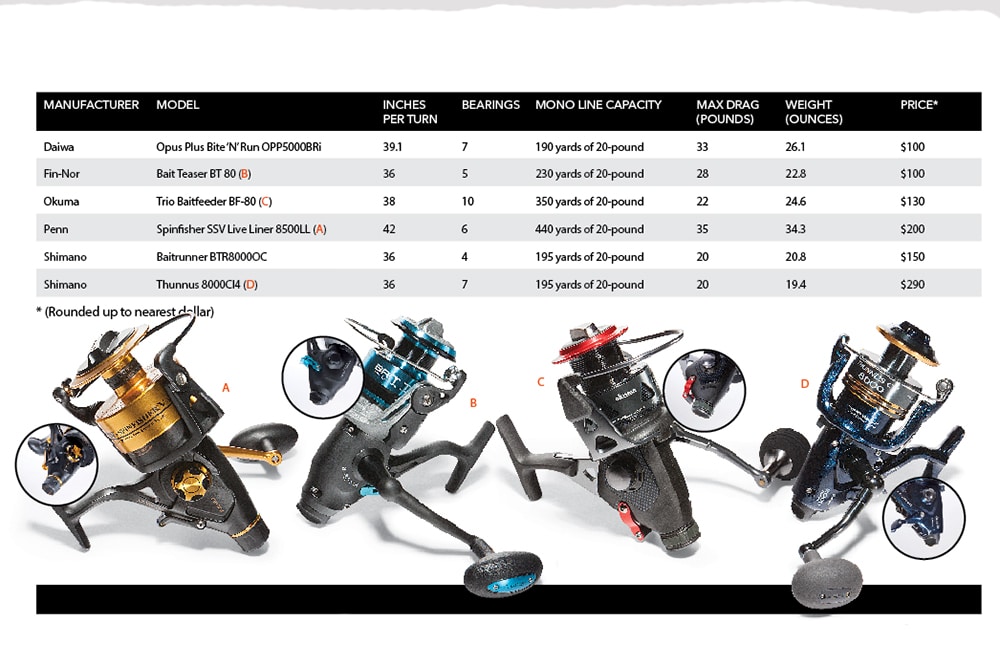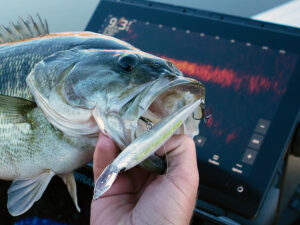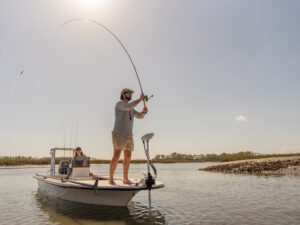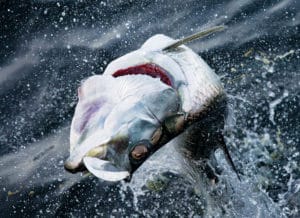Free-Spool Spinners
Fishing with live baits quickly becomes a hassle if an angler doesn’t have the right tools. That’s why growing numbers of fishermen today turn to spinning reels with dual drags to get the job done. A secondary drag applies single-digit pounds of pressure to create tension-controlled free-spool, similar to a conventional reel. There is one key difference: Spinning reels won’t backlash.
Shimano introduced the Triton Baitrunner Plus saltwater reel in 1988, setting the standard for free-spool spinners. But today many top manufacturers also produce their own models at reasonable prices (between $100 and $200), including Penn’s Spinfisher SSV Live Liner, Shimano’s Thunnus CI4, Fin-Nor’s Bait Teaser, Okuma’s Trio Baitfeeder and Daiwa’s Opus Plus Bite ‘N’ Run. Shimano still produces Baitrunners too, with the Baitrunner OC introduced in 2013.
“By flipping the lever on the back of the reel, you disengage the front drag and engage the rear drag,” says Penn’s Mike Rice. “The rear drag is much weaker and nearly tension-free at its lightest setting. [This function] allows live baits to swim freely away from the boat and the angler to ‘feed’ a fish without line resistance.”
Fishing live-lined baits and adding light drag tension, all without flipping the bail or affecting the main drag, offers a different dimension to spinners. In fact, the dual drag on a spinner acts much like a spool-tension knob on a bait caster: When either reel is disengaged, tightening the secondary drag or spool-tension knob adds light pressure to allow free-spool.
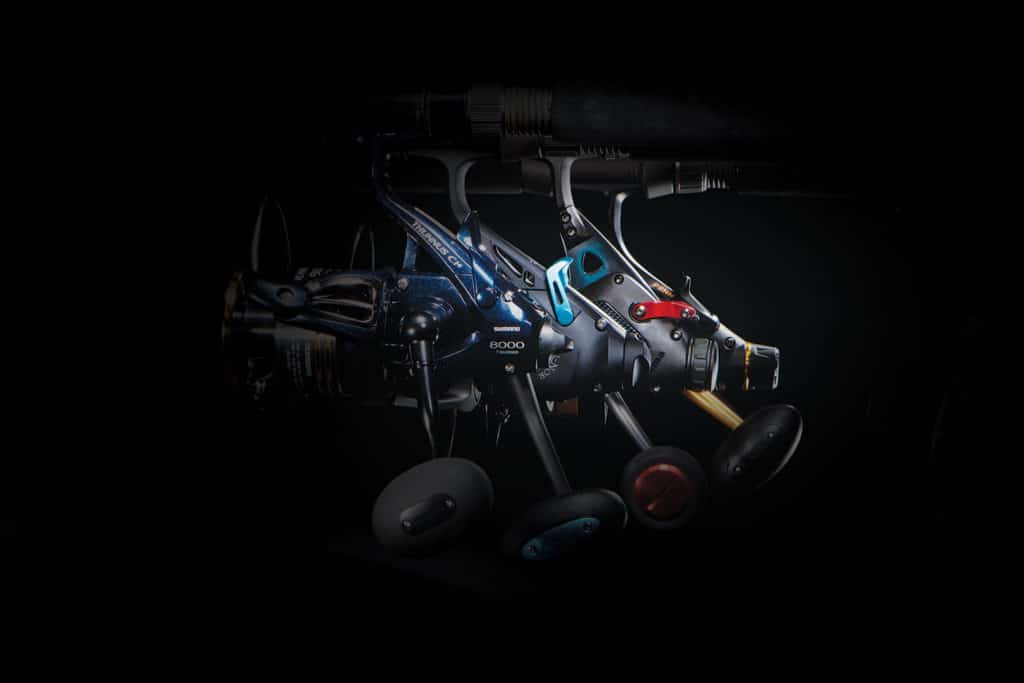
Function Follows Fishing
Compared to traditional spinning reels, spinners with free-spool capability utilize a more complex design in the gear box and weigh more because of the dual drag. The top portion of the reel functions as a traditional reel — you set the primary drag just like a normal spinner — but the major difference is in the caboose.
“[These types of reels] include a rear drag with small drag washers, plus an actuator or ‘teaser’ lever,” says Fin-Nor’s Chris Littau. “To engage the rear drag, you flip the lever. This switches the drag from the front to the rear. Adjust the rear knob until the desired drag is set, which is typically very light.”
Littau explains in detail how the Fin-Nor Bait Teaser model differs from a traditional Fin-Nor spinner like the Lethal. “In normal operation, the center-spool shaft is keyed, not allowing it to turn, so the spool turns on the shaft using the top spool washers,” he says. “When you flip the switch, the shaft is unkeyed and the entire center-spool shaft turns along with the spool. Now the spool and shaft use the rear drag washers.”
Daniel Ramos, of Okuma, explains how the Trio Baitfeeder model operates similarly to other free-spool spinning reels. “When the Baitfeeder is engaged, the main drag is turned off by disengaging the reel’s main shaft and allowing the spool to spin with little to no drag,” he says. “On a traditional spinning reel, the main drag is always engaged. The main shaft is secured and cannot be disengaged to allow the spool to release line.”
Transitioning between the spinner’s secondary and primary drag is incredibly easy, though the resistance between drags might be drastic, depending on your settings. Think of it as though you’re quickly moving a lever drag close to the strike position. Often, that’s the time when the hook really sets or pulls, so some anglers make the transition smoother by using stretchy monofilament. Braid affords much higher line capacity on the reels but offers little give, so both mono and braid are popular main lines on these reels.
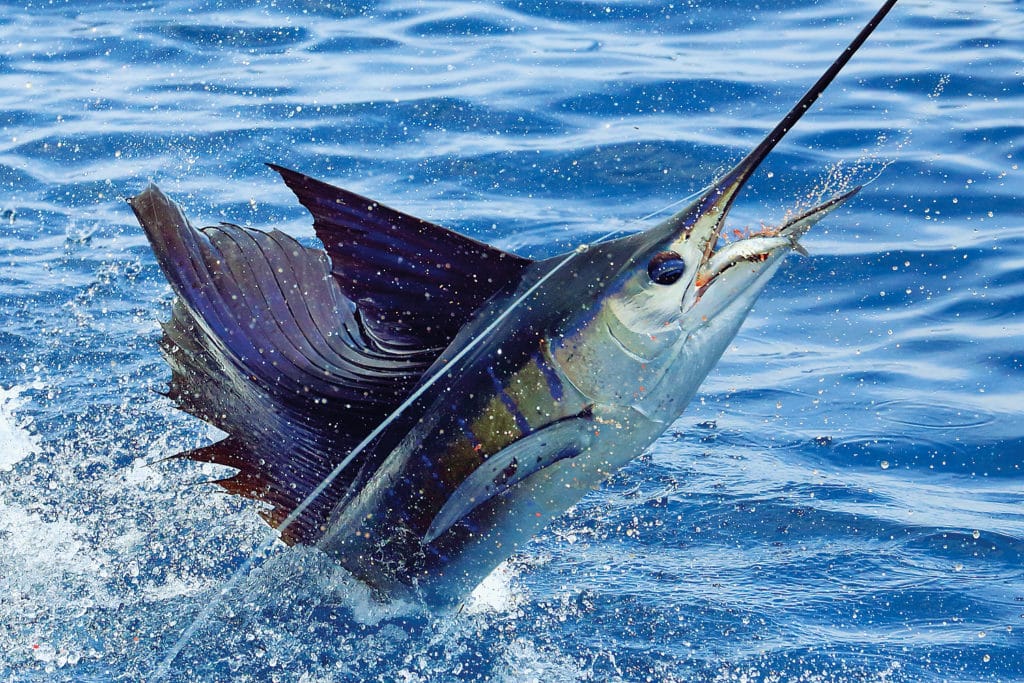
Opportunities Galore
Even with a free-spooling spinner, the angler must open the bail to cast, though most anglers free-line or bottomfish without ever touching the bail. Sailfish are one particular fishery where this type of reel excels, especially when live-baiting with circle hooks. Capt. Steve Rodger, owner of Spear One Charters in Key West, catches plenty of sailfish using the Shimano Thunnus CI4 reels.
“Sailfish can rip a bait from a hook if you lock the drag down,” says Rodger. “So I’ll use the Thunnus to drop baits back hands-free. You don’t really have to tend to them until they get bit, so I’m able to fish extra rods.”
Besides sailfishing, Rodger chunks for blackfin tuna, wahoo and tarpon; chums for yellowtail snapper; and even sand-balls for mutton snapper using the free-spool feature. Sand balls are a mix of oats, fish oil, sand, chum and other ingredients pressed into a ball around a hooked bait, meant to get the bait deeper, past smaller fish, and attract larger specimens once it breaks apart. Though the targets vary in size, weight and location, Rodger gives his customers similar specific tips.
“Let’s say we’re chunking for tarpon in the harbor,” he says. “I tell my angler to flip the lever and set the rod in a rod holder. Then I’ll have the angler pull line from the rod tip while the setup sits, applying good tension as the bait drops back.”
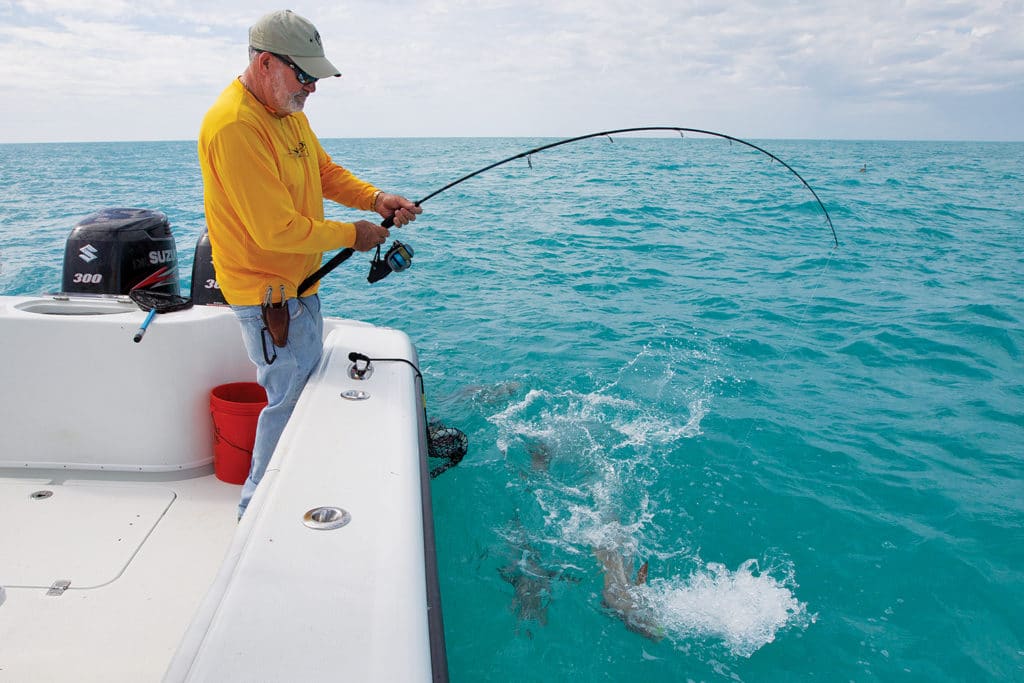
When a fish hits, the angler lets go of the line, picks up the rod, and reels to start the fight. Disengage the free-spool feature before or after picking up the rod — the order doesn’t matter, says Rodger.
For bottomfishing, the Keys captain uses free-spool to drop baits as deep as 200 feet for mutton snapper. “It just adds a little tension heading toward the bottom,” he says. “I’ll leave the bait-runner lever engaged until I get a bite too. Having slight tension when a fish takes is better than a tight drag, especially when I’m drift-fishing. After a strike, I let the fish take the bait before reeling tight.”
The only true limitation to free-spool spinners is their pound-test rating. “The Penn Live Liner 8500, with 35 pounds of drag and spooled with 65-pound braid, can target tuna and billfish to 150 pounds effectively,” says Rice. Most other reels mentioned above range from 20 to 28 pounds of max drag, forming a versatile class of spinners great for sailfish, jacks, kingfish and dolphin.
Top Free-Spool Spinner Models
